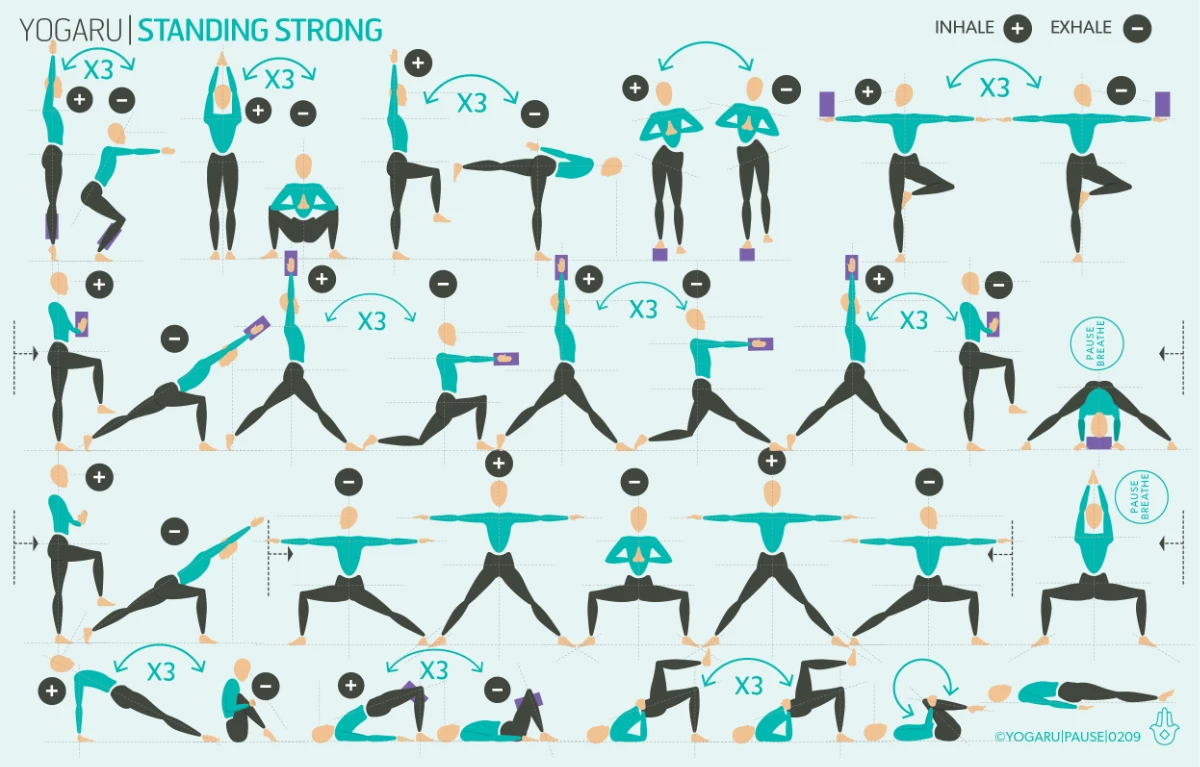
by Ruth Delahunty
Yoga expert
Ruth’s classes focus on mobility and stability to stretch and strengthen the whole body – bringing balance back physically and mentally. She is a member of the Yoga Medicine ® Therapeutic Specialist team and creator of the Yogaru, 108 Asana yoga sequencing cards.
Resilience & stamina
Standing strong is about more than just physical stability – it’s about resilience in the face of challenges and prioritising recovery. In Building Resilience we explored mental and emotional endurance. Now, let’s shift our focus to the physical foundation of resilience: the feet, ankles, and legs. Strengthening and maintaining these areas enhances balance, stability, and coordination while reducing your risk of falls and injuries.
The leg muscles are among the largest in the body. Strengthening them boosts circulation, improves heart health, and stimulates bone density by exerting force on the bones. Developing endurance and stamina in your lower body gives you the confidence to move with ease and control, whether in your yoga practice or daily activities.
Building foundations
A strong stance begins with mindful contact with the ground – pressing into three key points of contact: the big toe, little toe, and centre of the heel. Engaging these points lifts the arches, channels energy upwards, and activates the legs for greater stability. When our foundation is strong, we stand resilient in both body and mind.
Balance is a crucial life skill that is very trainable and essential at every age. A solid foundation not only improves balance but also enhances posture, core engagement, and lower back support. Yoga offers a unique opportunity to reconnect with the feet, strengthening muscles often weakened by shoes and modern surfaces. Strong legs offer the power for steadiness, while well-conditioned feet and ankles enhance sensory awareness and reaction time.
By cultivating symmetrical strength in the feet, ankles, knees, and legs, we move with greater confidence and ease. Strength can be built in yoga through slow, controlled movements or by holding static poses with intentional muscular engagement. A resilient body supports a resilient mind, allowing us to stand firm in both movement and life.
Exploring standing strong in your practice
This sequence offers plenty of opportunities to strengthen your feet, ankles and legs. The first row is a series of balancing drills challenging postural muscles, proprioception and cognitive – the three components that together make up your ability to balance. The second and third row are the two main standing flows which are each built of three two pose mini flows and finish with a single pose that you will hold for three to five full breaths.
Complete the full line with the right leg forward and then repeat the line with the left leg forward – this is one full round of the flow. For a longer practice you can repeat these two standing flows. The sequencing finishes with some strengthening for the back of the hips and some hip circles to massage out the muscles.
Alignment cues
Have a read of the tips below and either print out the sequence or save it onto your device:
- Move slowly and with control through the sequence like you are moving through honey. Use your breath to help you access your postural muscles. Inhale is indicated with a ‘+’, exhale is a ‘-”.
- Press into the three key points in the feet, find your foundation and feel the ankle and legs muscles activate.
- Repeat the two standing flows for two or three rounds per side, stepping right leg forward first then left leg.
- Give yourself at least 5 mins in Savasana to transition back into your day.
To save the images for personal use click and hold down the image until the ‘save image’ option appears; on Mac hold down ‘control’ and click the image to get the option box; on PC right click on the image to get the option box. Scroll down in the ‘option box’ and click ‘save image’.
“I have never felt better since starting Ruth’s classes. I’ve noticed I’ve had less sporting injuries, I feel more flexible, stronger, and I’m even sleeping better!’”

